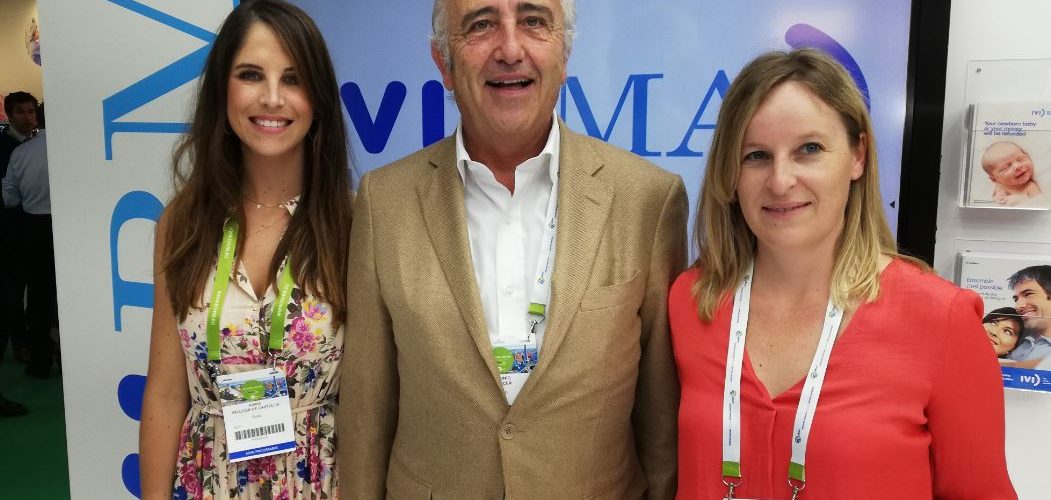

The European Society of Human Reproduction and Embryology (ESHRE) was first conceived as an idea in Helsinki. The initial impetus came from Professor R.G. Edwards of Cambridge University and Dr Jean Cohen from Paris. They gained support from professional colleagues for the setup of a society to promote research on reproductive medicine and science. The ESHRE held its first AGM in Bonn in 1985. Today it plays a leading role in promoting interest in, and understanding of, reproductive biology and medicine. It does this through facilitating research and disseminating the results to the general public, scientists, clinicians and patient associations. The Society also engages with politicians and policy makers throughout Europe.
We at IVI play an active role in research, and make our findings and results available for wider discussion within the assisted reproduction community. Here we take a closer look at three exciting advances and research developments in the field as examples of our work, which ESHRE supports and disseminates amongst its members.
Two IVI studies to assess the capability of predictors and markers of male fertility
Male factor infertility, which accounts for 40% of infertility cases, has in the past been somewhat neglected as a field for research because of the mistaken impression that in most cases it is the female factor which is the most significant. However for many years IVI has been paying specific attention to the area of male infertility. This is demonstrated by the four studies that were presented at the prestigious ESHRE annual congress, two of which are highlighted below.
In the first of these two IVI studies, Marga Esbert of IVI Barcelona explores the predictive capacity of different factors for advance detection of the presence of sperm in the testicle prior to a testicular biopsy. The significance of this work is that, in cases of azoospermia (the absence of sperm in semen samples) a testicular biopsy to determine whether the testicle generates sperm is currently required. The research could lead to a method of allowing clinicians to establish the presence or absence of sperm in the testicle whilst avoiding an invasive procedure.
Dr Esbert based her study on the determination of the predictive capacity of certain factors to indicate the existence, or otherwise, of sperm in the testicle. She found that in 100% of patients with obstructive azoospermia, sperm recovery was possible. However, in men with secretory azoospermia the percentage drops to 29% and these are the patients who would have most benefited from a diagnosis using a non-invasive method.
In the second highlighted study, Dr Rocío Rivera of IVI Valencia demonstrates the association of certain proteins in sperm with the ability to achieve conception. The study investigated variations in the protein profile of the samples of different patients comparing those for whom, thanks to fertilisation by ICSI, it was possible to achieve a pregnancy with those who had previously failed. By analysis of the proteins making up the sperm, those relating to reproductive success or failure were identified.
Dr Rivera confirmed that differences in proteins can serve as markers that will allow us to separate sperm that are most conducive to pregnancy from those that are not. Further research will be carried out into whether enriching sperm with the optimal proteins could be used in the future as a reproduction treatment. You can read more about these developments and other aspects of our work on the IVI website.
Ovarian rejuvenation: a collaboration between IVI and La Fe Hospital
IVI is the world leading pioneer of ovarian rejuvenation via the transplantation of stem cells from bone marrow. To date, three babies have been born using this technique.
This is a technique that could revolutionise assisted reproduction and provide hope to all those women who suffer from premature ageing of the ovaries and thus fail to conceive. After initial laboratory trials, the second phase of the study progressed to working with twenty low-responding patients. In these tests stem cells were mobilised, extracted from peripheral blood and reimplanted into the ovary to reverse the aging process and activate dormant follicles. The latest developments in this work were presented during the ESHRE in July 2018 by Dr. Nuria Pellicer, who currently works at La Fe Hospital and collaborates with the IVI Foundation.
Professor Antonio Pellicer, director of the study, explains, ‘We saw that the technique helped to improve the ovarian response, thereby increasing the production of oocytes.’ However, not all of the resulting embryos were viable, and a great deal of variation among the low-responding patients may have distorted the results. The team is therefore planning a new phase to the study. For this third phase, women under 38 years of age with premature ovarian failure are being recruited.
Two pathways will then be trialled: in the first, the stem cells will be mobilised, extracted, and reintroduced directly into the ovary. In the other pathway, a less invasive option will be tried, also mobilising the cells and letting them circulate through the affected area to reverse the aging process and enable the activation of dormant follicles. Professor Pellicer explains that, ‘With this last approach we hoped to verify whether, by the mere fact of increasing the number of stem cells and allowing them to circulate through the blood system, they were able to reach the ovary and act on it. Our intention, when we are clear about how the cells respond, is to develop a technique that is the least invasive possible and then standardise it so that it can be applied in any clinic.’
The role of Artificial Intelligence in embryo selection
As with many other areas of technological development and scientific research, the role of Artificial Intelligence can be significant in assisted reproduction techniques. The third example of IVI’s pioneering work presented to ESHRE in Barcelona in July 2018 illustrates this.
The study, presented by Dr Marcos Meseguer, an embryologist at IVI Valencia, concerns the ability of Artificial Intelligence (AI) technology to operate much faster and more consistently than an embryologist in selection and classification of embryos using time-lapse imaging. As a result, its deployment can inherently improve our ability to assess the viability of embryos.
During the process they ‘taught’ these evaluation measures to the AI technology. The results demonstrated that the AI learned to measure, interpret, analyse and distinguish the different parts of the embryo and to select them according to the correct criteria, perfecting its process as it increases the number of embryos evaluated.
Dr Meseguer explains, ‘The application of AI to the classification of the human blastocyst is economical, non-invasive and more reliable than the classification by an operator. Instead of a human looking at thousands of images, the AI continuously evaluates, learns and quantifies additional information.’
This precise evaluation is one of the ways of reducing the inevitable subjectivity that affects the process of embryo selection. The use of digital image processing and AI techniques in conjunction with time-lapse imaging, which allows us to choose the moment to evaluate the embryo, always at a fixed time, brings great consistency to the process. This analysis is carried out identically, in any part of the world, since it is performed based on fixed and standardized procedures. This is therefore a very promising development which has the potential to improve operating practices and results in clinics throughout the world. However, further independent studies are required to demonstrate reproducibility before establishing their clinical application. You can access our full report of this study published on our website.
These and other aspects of continuing research and joint studies are just a few examples of how we at IVI work with partners on refinement and improvement of assisted reproduction techniques. If you would like to know more about our work, or discuss any aspect of how we may be able to help in your individual case, don’t hesitate to get in touch. Give us a call on 08 000 850 035 or complete our online contact form.




Comments are closed here.